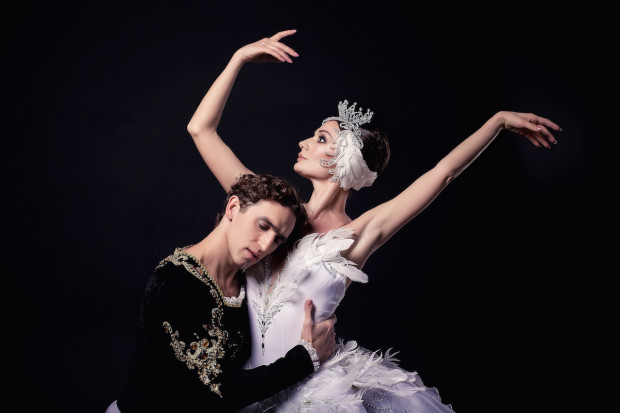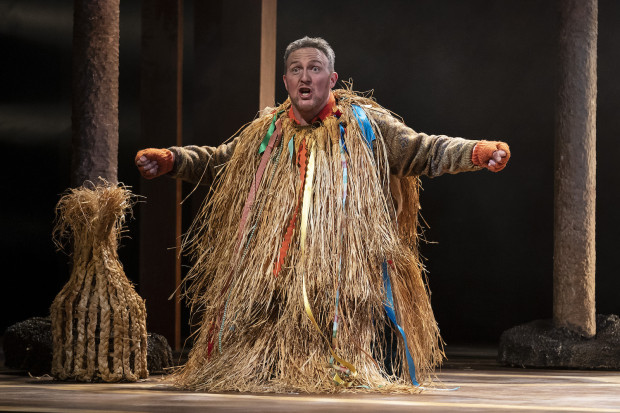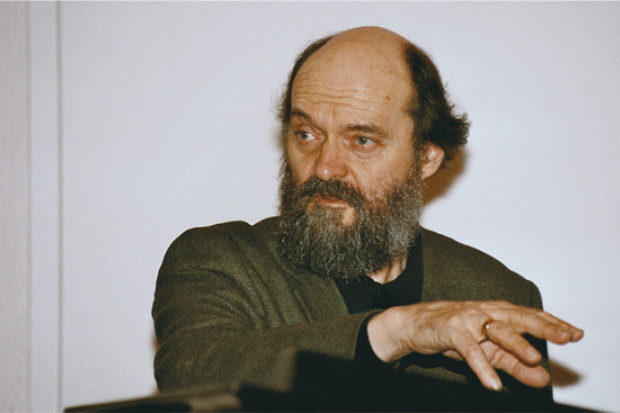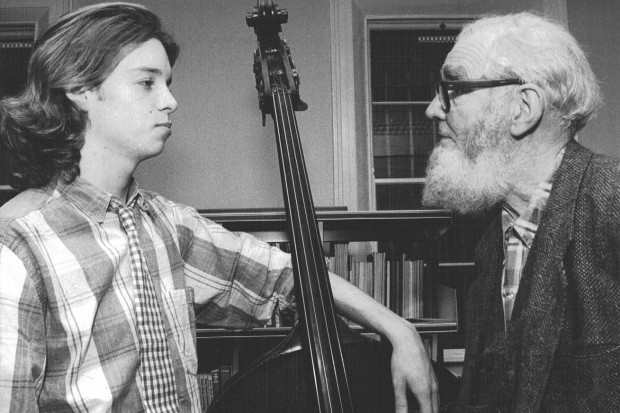On Fatwahs and Compressed Frequencies
There are only two kinds of music: good and bad.
Those who deliver this truism are usually considered to be expressing the ultimate in tolerance and pluralism. But is this appearance deceptive? Replace the word ‘music’ with ‘people’, and the formulation begins to acquire slightly less positive connotations, perhaps reminiscent of G.W. Bush’s ill-omened division of the world into axes of good and evil.
In everyday life we generally agree that there are many kinds of people of different temperament, pigmentation, background and orientation, and that between ‘good’ and ‘bad’ there are innumerable nuances that give our world its complexity, richness and, indeed, whatever beauty it possesses.
The superficial intention behind the ‘two kinds of music’ formulation is to proclaim the irrelevance of the distinctions we make between classical, rock, folk, jazz, traditional, and the rest. But – just so long as they are not inscribed in stone – do these distinctions not contribute to the multi-facetedness that makes music such a source of inexhaustible fascination?
In common usage, the accusation of élitism tends to be reserved for those toffs working within the field of classical music. However, classical musicians debating the relative merits of metal and hip-hop are much more common than rockers arguing the toss between dodecaphony and minimalism. If élitism may be defined as the enjoyment of superior status by a small group or class of persons, and if status in our consumerist society is ultimately defined in terms of wealth, then classical musicians are conspicuous by their absence from the list of the world’s wealthiest people compiled by Forbes, a company founded by a lover of bagpipe music and recently graced by the advent of Bono as a major stakeholder.
****
Rock musicians periodically display their indebtedness to classical models. Since 2000, a helpful internet source (www.solopassion.com/node/971) lists Graduation by Vitamin C based on Pachelbel’s Canon; Hall of the Mountain King by Apocalyptica, a metal version of Grieg; Love U Crazy, Those Dogs and Sad But True, all by En Vogue and based on Tchaikovsky, Bizet and Beethoven respectively; Black, Black Heart by David Usher containing Delibes’s Flower Song from Lakmé; Coming 2 America by Ludacris, imaginatively fusing Mozart and Dvorak; Karma by Alicia Keyes, sampling the Brahms Violin Concerto; Paris by Delerium, based again on Pachelbel’s trusty Canon; Road to Joy by Bright Eyes, featuring the melody of Beethoven’s Ode to Joy; and much, much more.
What these examples have in common is that they implicitly confine ‘classical music’ to a narrow historical period: their models are all standards from the tonal tradition, and barely impinge upon the twentieth century. Similarly, the vaunted ‘classical influence’ embodied by, say, Elvis Costello’s Juliet Letters (1993) boils down to a high-falutin’ Shakespearean theme, the presence of a string quartet and a singer in a fancy suit.
There is no question here of dismissing these crossovers as invalid or contemptible. Pop music is by definition tonal or modal, and will always blend most organically with other tonal or modal music. Since crossover works both ways, however, it may be that those who press classical composers to open themselves to influence from pop music fail to recognise that they are thereby pressing certain stylistic claims that restrict the composer’s options rather than broadening them out.
Incidentally, the eagerness of rockers to adapt classical models and claim classical influence is one of the more curious anomalies of (post-)modern civilisation, and seems to constitute a kind of inverted slumming – musicians, often untrained, who make astronomical sums of money guiltily trying to prove that they’re just as good as those who are intensively trained yet make next to nothing. The latter, meanwhile, bitterly envy the popularity, spontaneity, and prosperity of their rivals.
****
Classical performers who dip their toes into popular music tend to be praised lavishly for ‘breaking down barriers’ between different musics and different audiences. Examined more closely, however, it might appear that these musicians are in fact reinforcing stereotypes and hence creating new barriers, or at least relocating the old ones.
Nigel Kennedy is a useful example. Given to adopting a ‘mockney’ accent and geezer persona, with much reference to favourite football clubs, Kennedy set out his stall from the start as a populist eager to brush the cobwebs from classical performance practice, with its monkey suits and dickey bows. He enhanced this image by repeatedly extolling the virtues of Jimi Hendrix, playing in concert with The Who, and recording jazz sessions wielding the electric violin.
So it would indeed appear that Kennedy is ideally placed to ‘popularise classical music, particularly among young people’ as Wikipedia claims. But just what is he popularising? A glance at his repertoire reveals a concentration on the standards: Vivaldi, Mozart, Beethoven, Brahms, Elgar, and again Vivaldi, with just one swoop into the twentieth century with the ever-popular Berg Concerto. In other words, anyone turning to classical music simply because Kennedy is playing it will glean the impression that ‘classical’ = tonal music of, predominantly, the eighteenth and nineteenth centuries.
Again, no belittlement of Kennedy is implied: his musicianship is unchallengeable, and his support for the beleaguered Palestinians and refusal to play with Israeli orchestras under present conditions shows that careerism isn’t the only star that guides him. Nonetheless, the claim that he has led a generation of disaffected young people to appreciate the multifarious world of classical music is untenable.
Similarly, The Three Tenors and their innumerable epigones serve to reinforce the notion that opera = nineteenth-century Italian opera plus Puccini. Perhaps the young Welsh mezzo-soprano Katherine Jenkins has a hidden urge to record albums of Berg and Berio, but her backers and bankers are likely to ensure it stays hidden. The fact that the repertoire of familiar classical music is shrinking daily is largely due to the propensity of star performers to recycle endlessly a small range of ‘best-loved’ standards, just as surely as the requirements of the car radios on which commuters listen to music compress the actual range of frequencies they are hearing.
****
The US-American composer John Adams is often held up as an exemplar of how classical composers can – or, more often, should – introduce elements of popular music into their work, thus making it more readily accessible and perhaps even better. His 60th birthday in February 2007 provided many opportunities for airing opposed viewpoints on the whole question of classical/popular crossover.
Here, the RTÉ Living Music Festival celebrated Adams’ music as being, in the words of Artistic Director Ronan Guilfoyle, ‘at once accessible, humorous, sophisticated, emotional and utterly relevant to the society from which he comes.’ There was much citation and recitation of Adams’ claim that ‘Whenever serious art loses track of its roots in the vernacular, then it begins to atrophy’, yet when in the course of a public discussion I expressed my belief that this was quite an offensive and ill-considered dictum, I was surprised that nobody was prepared to disagree with me.
The dictum is offensive and ill-considered for at least two reasons. Firstly, it makes an unqualified and authoritarian assertion of what art must do to qualify as ‘serious art’. This is an essentially totalitarian and exclusive stance.
Secondly, the concept of ‘the vernacular’ is highly tendentious. The definite article suggests that there is only one vernacular, with common consent as to its provenance and identity. One of the greatest American composers was Charles Ives, whose revolutionary greatness surely consisted in the promiscuity with which he integrated and disintegrated a multitude of vernaculars from fugues to fuguing tunes via Stephen Foster and ragtime. Pierre Boulez turned up his nose at this, dismissing Ives’ methods in favour of Mahler’s – a textbook example of a Eurocentric notion of vernacular deafening one of the greatest European composer/conductors to the achievement of a universal genius. In the arts, the notion of vernacular is misplaced and invariably introduces a whiff of ethnocentrism.
****
Across the Irish sea, the Trotskyist music-critic Simon Behrman, in a birthday homage to Adams, proclaimed that ‘classical music… has become an ossified museum piece… And modern classical composers have, by and large, found themselves unable to engage with popular music.’ Adams, on the other hand, ‘manages the difficult feat of composing music that is innovative, modern and yet highly accessible.’ (Socialist Worker, 2035)
There is an implicit imperative here: classical music must engage with popular music if it is to engage with the populace. This implies an unspoken premise: music must engage immediately with listeners, without this engagement necessarily being reciprocal, i.e. involving any attempt on the part of listeners to engage actively with the music by coming to grips with whatever distinguishes it from, and links it to, other kinds of music.
Perhaps there is still another unstated premise: ordinary folk are too thick to engage with any music that isn’t immediately engaging (note the circular logic). Perhaps self-styled socialists might think twice about the implications of such a perspective.
Behrman backs his argument with the claim that ‘Haydn, Mozart, and Mahler used contemporary popular song and dance melodies as a reference point for their own compositions.’ But surely the adverb ‘sometimes’ is missing here. If such a ‘reference point’ is a qualitative criterion, then Haydn’s Seven Last Words, Mozart’s C Minor Mass and Mahler’s 9th Symphony all fall by the wayside, as do the vast majority of the works of most classical composers. Behrman goes further, however, and maintains that Haydn et al ‘frequently made allusions to contemporary social concerns.’ No evidence whatsoever is provided for this remarkable assertion, presumably because none exists.
More importantly, Behrman clearly sees ‘accessibility’ as being inherent in music itself, rather than in the social, political, economic and educational structures which condition musical reception and dissemination (see my contributions to JMI on the subject of music and accessibility). Again, this seems a strange blind-spot for someone claiming allegiance to socialist principles.
****
This blind-spot is not restricted to those of a populist disposition. From the other side of the same ideological fence, the English composer Gordon Downie celebrated Adams’ birthday with a broadside against Adams and other composers ostensibly revealing ‘a right or centre-right aesthetic disposition – Oliver Knussen, Thomas Adès, Simon Bainbridge, Tan Dun and latterly, Pierre Boulez.’ (Weekly Worker, 660) For Downie, Adams is a musical Neo-Con whose work is a correlate in sound to the Project for a New American Century. His music seeks ‘to rebrand or resuscitate tonality and restore musical materials or forms that objective historical processes of development have already superseded.’ It ‘is virtually indistinguishable from… the aural soundscape of the latest Hollywood blockbuster.’
The imperatives behind Downie’s fulminations are expounded elsewhere in a lengthy interview on musicalpointers.co.uk in which he adds to the aforementioned unfortunate composers the names of Judith Weir, James MacMillan, John Woolrich, John Casken, and Sally Beamish. Often accused of Stalinism, he believes that ordinary people’s taste has become so corrupted by capitalism that in culture, as in other aspects of life, they must be guided by the ‘enlightened leadership’ of ‘a radical intellectual vanguard’. As opposed to ideologists of the New Left who seek ‘to interpret aesthetic complexity as a means to sustain an unequal distribution of cultural power’, Downie sees complexity as a means of undercutting commodification and reification: ‘simplicity isn’t interesting.’
Downie’s own music, be it noted, sounds like an attempt to take up where Stockhausen left off circa 1952. It might be contended that ‘objective historical processes of development’ had ‘already superseded’ such an option, and that nostalgia for music of half a century ago is not necessarily more progressive than nostalgia for that of the nineteenth century.
Ultimately, Downie is forced to concede that ‘the bourgeoisie appropriate everything… I am unable to argue that complexity doesn’t assist the maintenance of the political status quo. But capital deforms and corrupts all that it touches…’ Thus it would appear that the attempt to codify ‘left-wing’ and ‘right or centre-right’ stylistic characteristics is no more than a false trail, perhaps intended to enhance the codifier’s revolutionary self-image.
****
In a recent paper given at a conference on twentieth-century music in York University*, Downie’s interlocutor in the above interview, the concert pianist and political activist Ian Pace, criticised ‘a model of mass culture conceived almost entirely in terms of its consumers rather than producers’ on the grounds that it ‘implies that such culture… is produced simply to satisfy a pre-existing demand, rather than attempting to engender one which can be exploited for profit.’ Instead of defining the difference between classical and popular music ‘in “culturalist” terms, grounded upon stylistic or aesthetic aspects of the musics in question’, Pace proposes ascertaining ‘the economic conditions within which music is produced, whether at the behest of feudal patronage or that of churches, the military and other comparable institutions, under the auspices of subsidised institutions that receive their money from democratically elected (or other) governments on regional or national levels, or produced purely in order to be sold as a commodity in the free market, with no government subsidy, only private investment.’
Such a shift in perspective, analogous to my own reflections on access and accessibility, might induce composers and other musicians to call a halt to the Manichean discourse in which different musical choices are demonised or canonised. The words ‘should’ and ‘must’ should and must be excluded from the vernacular of composers and critics. The most virulent turf wars in the musical world tend to be waged between beggars on horseback and beggars on foot, while corporate exploiters laugh all the way to the bank. Uniting, instead, against the social and political forces that encourage exclusiveness and sectarianism in art – as in life – might be a better way for composers and musicians to fulfil their responsibilities towards both music and society.
This need not preclude strong opinions and healthy argument: polemics spice up existence, and vigorous debate can generate new ideas. As long as one concedes that no human being stands outside history and can rationally maintain either that it has ended or that its destination is clear, there is nothing wrong in forcefully expounding one’s personal convictions about the nature, place and destiny of music. What is wasteful and shameful is the issuing of fatwahs against those who have a different view and a different practice.
* Ian Pace, ‘“The Marketplace as Woman????”: Commercialism as Postmodernism’s “Un-Other” in the Context of Contemporary Music’. Conference paper, Fourth Biennial Conference on Twentieth Century Music, York University, 2007. Unpublished, received from author.
Published on 1 September 2007
Raymond Deane is a composer, pianist, author and activist. Together with the violinist Nigel Kennedy, he is a cultural ambassador of Music Harvest, an organisation seeking to create 'a platform for cultural events and dialogue between internationals and Palestinians...'.















